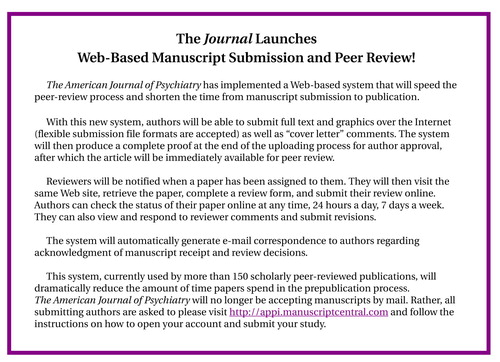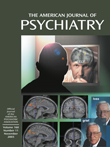In This Issue
A Literal Search for the Self
Brain regions underlying basic emotions are well known. Locating the areas activated when we think about ourselves in an emotional context could clarify brain functioning in depression. Healthy subjects were asked by Fossati et al. (p. 1938) to judge both the general desirability of various personality traits and how well each trait described themselves. These two conditions produced different patterns of brain activity, and the number of brain regions activated by the self-referential condition suggests that it involves a large network. The right dorsomedial prefrontal cortex appeared most specific to the personal perspective on the personality traits, whether they were positive or negative. This role in processing emotional experience is consistent with the dysfunction of this region observed in patients with mood disorders.
Snapshot of Bereavement
Bereavement has profound emotional, cognitive, and physiological effects. To determine more precisely the effects on the brain, Gündel et al. (p. 1946) measured brain activity during elicited grief in women who had recently experienced the death of a close relative. Composites of visual and verbal stimuli were presented; these included a picture of the deceased relative or of a stranger, combined with a caption containing grief-related or neutral words. Using these four composite categories revealed that pictures and words related to the deceased were associated with both overlapping and distinct brain region activations. Such different and widespread activity points to a distributed network of brain functions involved in emotion, memory, representation of mental states, visual imagery, motor responses, and the autonomic nervous system. This complex network may account for the unique, subjective quality of grief.
Smoking During Pregnancy: Giving Birth to Nicotine Dependence?
The grown children of women who smoked heavily during pregnancy are not more likely to smoke than are the offspring of other women. If they try cigarettes, however, the offspring of heavy smokers are more likely to become regular smokers and to become dependent on nicotine. These findings come from a 30-year study, beginning with pregnant women’s reports of their own smoking and following up decades later with interviews of 1,248 grown children of these women. Buka et al. (p. 1978) report that the increased risks were associated only with heavy smoking, i.e., a pack or more of cigarettes on one or more days during pregnancy. There was no association between the mother’s cigarette smoking and marijuana use by the offspring. This specificity to tobacco suggests prenatal effects of nicotine on neuroreceptors.
How Problem Gamblers Respond to Color-Word Mismatch
The Stroop test measures how well a person can override his or her first impulse. The person sees words naming common colors, but the color of the letters in the word “red,” for instance, may or may not actually be red. The subject is instructed to identify the color of the letters, but the usual impulse is to read the word. Responding correctly to incongruent color-word pairs therefore requires inhibition of one’s first impulse. Potenza et al. (p. 1990) hypothesized that brain activity during the Stroop test would differentiate pathological gamblers from subjects without psychiatric disorders. It was similar in most regions, but a difference was clear in the left orbitofrontal region of the ventromedial prefrontal cortex, where the pathological gamblers showed less activation. This region has been implicated previously in disorders characterized by poor impulse control.
Hard-Wired Sniff Test for Alzheimer’s Disease
The sense of smell deteriorates early in many patients with Alzheimer’s disease, as neuropathology affects medial temporal brain regions. Mild cognitive impairment, often a precursor of Alzheimer’s disease, likely is also associated with olfactory dysfunction. Because cognitive problems can interfere with tests requiring subjects to respond, Peters et al. (p. 1995) used a passive method for measuring olfactory functioning. A machine supplies a constant air stream to the nose. Periodically, hydrogen sulfide is introduced to stimulate the olfactory system. Electrical brain waves are measured through electrodes on the head. Of the seven healthy subjects tested, all had brain responses to the hydrogen sulfide, compared to only four of eight patients with mild cognitive impairment and four of 11 patients with Alzheimer’s disease. On the other hand, the subjects’ responses to odor sticks indicated olfactory dysfunction in nearly all of the patients with mild impairment or Alzheimer’s disease. These rates reinforce the suspicion that cognitive problems exaggerate olfactory dysfunction measured by active means.
Images in Psychiatry
(p. 1937)Sándor Ferenczi, M.D., 1873–1933
The Journal Launches Web-Based Manuscript Submission and Peer Review!
Click here for details.






